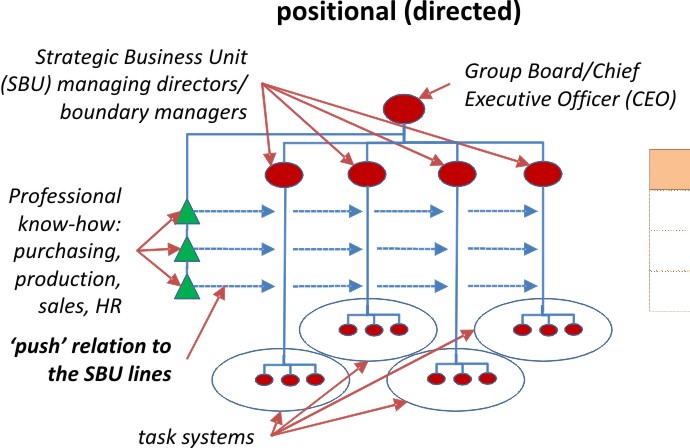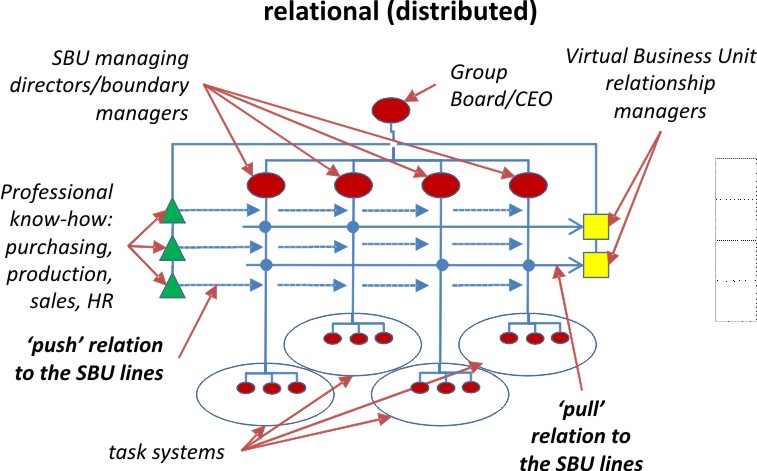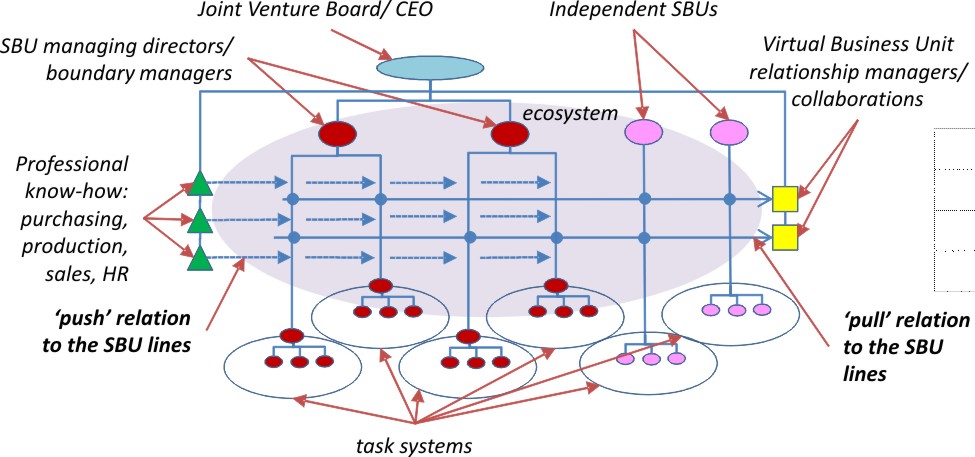by Philip Boxer
In the previous blog on strategy ceilings, I made reference to architectures as describing the way differentiated behaviors are integrated. How are these architectures to be described? What makes relational architectures different? And what architecturally distinguishes edge-driven collaboration?
The operational integration need only concern itself with the boundary or perimeter of the task system, all assumptions about ‘how’, ‘for whom’ and ‘why’ being implicit in the way its director manages its boundaries. In contrast, professional integration includes differentiated functions within it corresponding to the different professional bodies of knowledge, still leaving the ‘for whom’ and ‘why’ assumptions implicit. These differentiated functions deliver economies of scale and scope for the task system as a whole:

In contrast, positional integration by a single enterprise adds a Divisional form of organization so that the ‘for whom’ assumption can be made explicit. Thus each Division forms a Strategic Business Unit (SBU) with a distinct positioning in the market, across which the different forms of professional know-how are supplied centrally through ‘push’ relationships to the SBU line management:

This ‘directed’ positional integration contrasts with ‘acknowledged’ positional integration, in which it is the acknowledged leadership of a contractual entity or Joint Venture that determines how the different businesses are to be brought together – in this case corresponding to the two Group Managing Directors. In both cases, the ‘why’ assumptions get left implicit, determining the (symmetric) way in which markets are defined by the Joint Venture:

But what happens when the enterprise takes up an East-West relation to demand, using Virtual Business Units (VBUs) to provide relational integration through the ‘pull’ relations they establish with the SBU line managements.1 These ‘pull’ relations establish an internal market in which the VBUs are able to use only those products or services that they need. This situation arises where the enterprise becomes a prime contractor, for example in defence contracts, or where particular customers demand greater integration of products and services, for example in providing cellular communications infrastructures, or where the enterprise becomes sufficiently complex (because of its size) to form its own ecosystem, for example with the UK NHS or the large global financial institutions. In this case, leadership has to be distributed across the enterprise, with the role of the center becoming one of managing the tension between the supply-side and demand-side economics of the enterprise as a whole:

Finally, there is relational integration driven by collaboration ‘at the edge’, in which there is no single authority managing all the tensions between the supply-side and demand-side economics of the ecosystem as a whole, other than perhaps through government imposing demand-side regulation to limit the power of suppliers over customers. This is the domain of open-source suppliers, ‘thick’ markets and multi-sided demands, in which competition takes place at the level of the ecosystem of suppliers and customers, rather than at the level of the individual supplier:

These distinctions correspond to different approaches to leadership reflecting the different forms of integration, with asymmetric leadership being associated with the relational approaches to integration on the right of the ‘squiggly line’. Note that in these cases, ecosystem-level considerations have to be taken up even by the single enterprise , the differences between collaborative and distributed leadership being essentially over the use of ‘open-source’ versus ‘closed-source’ approaches to competition:

Enterprise Architecture and Governance
Notes
[1] Thinking of this in terms of rcKP propositions, r-type and c-type propositions can be supplied by an SBU, but K-type or P-type propositions need a Virtual Business Unit capable of aligning multiple products and services to a customer’s demand. This may be done by depending on a Faustian pact with an individual given permission to bend the organisation’s North-South rules because of the scale of the individual contract, or it may involve moving to an East-West dominant form of organisation.